Description
Lemongrass, Cymbopogon citratus, is a wonderful aromatic perennial multipurpose clumping grass. Lemongrass is an essential flavor in Southeast Asian cooking, but also a great mulch plant, being high in carbon makes it an excellent addition for your carbon ratio in your compost pile. It also works great as mulch around your plants; cutting the plant back to 6-12 inches tall it will regrow vigorously. The roots go deep and help prevent soil erosion as well. This plant is closely related to citronella grass, (Cymbopogon nardus), meaning that lemongrass also contains insect repellent properties (great next to your tomatoes or bell peppers). And finally lemongrass is a great barrier plant; most weeds will be stopped in their tracks trying to cross a lemongrass hedge.
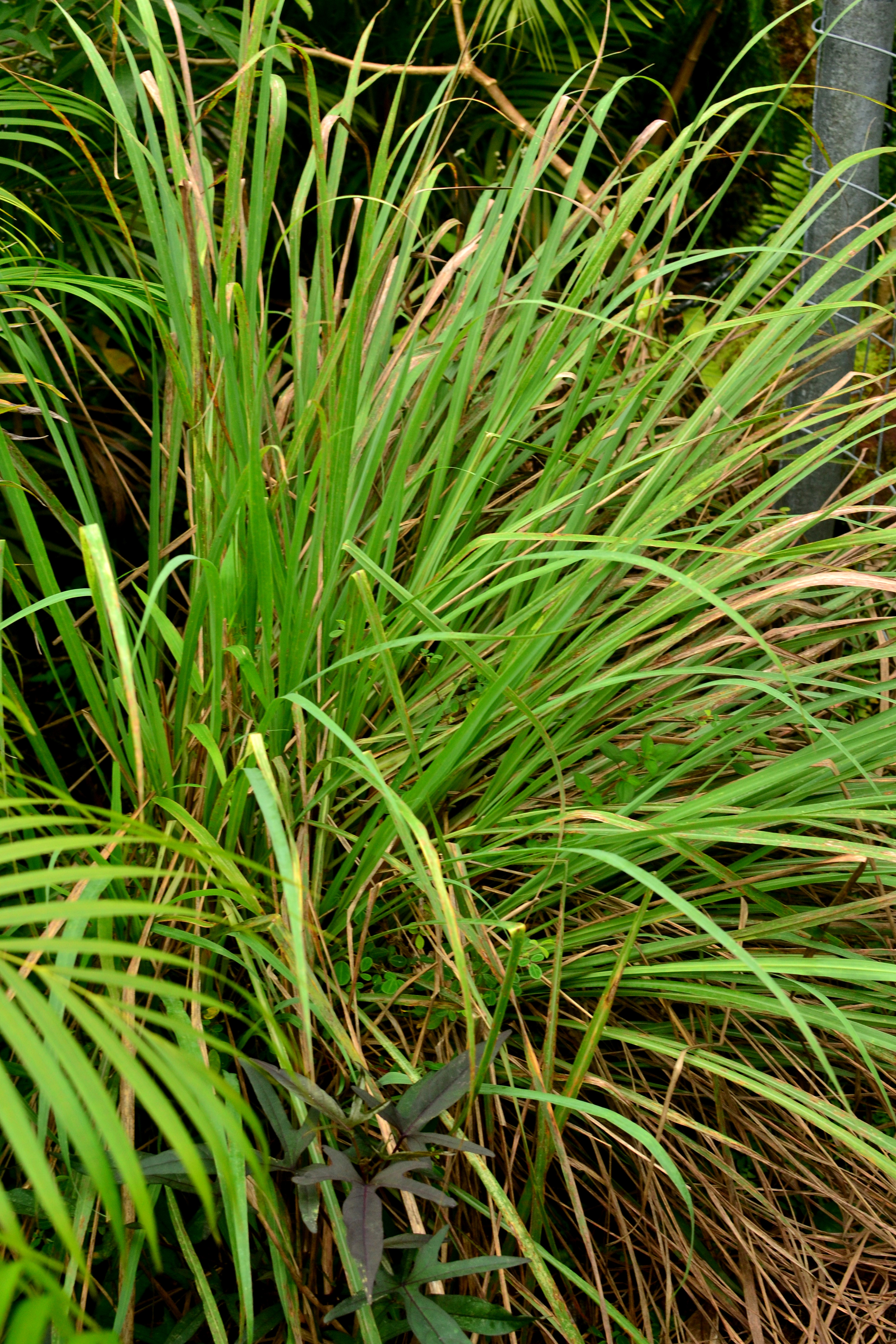
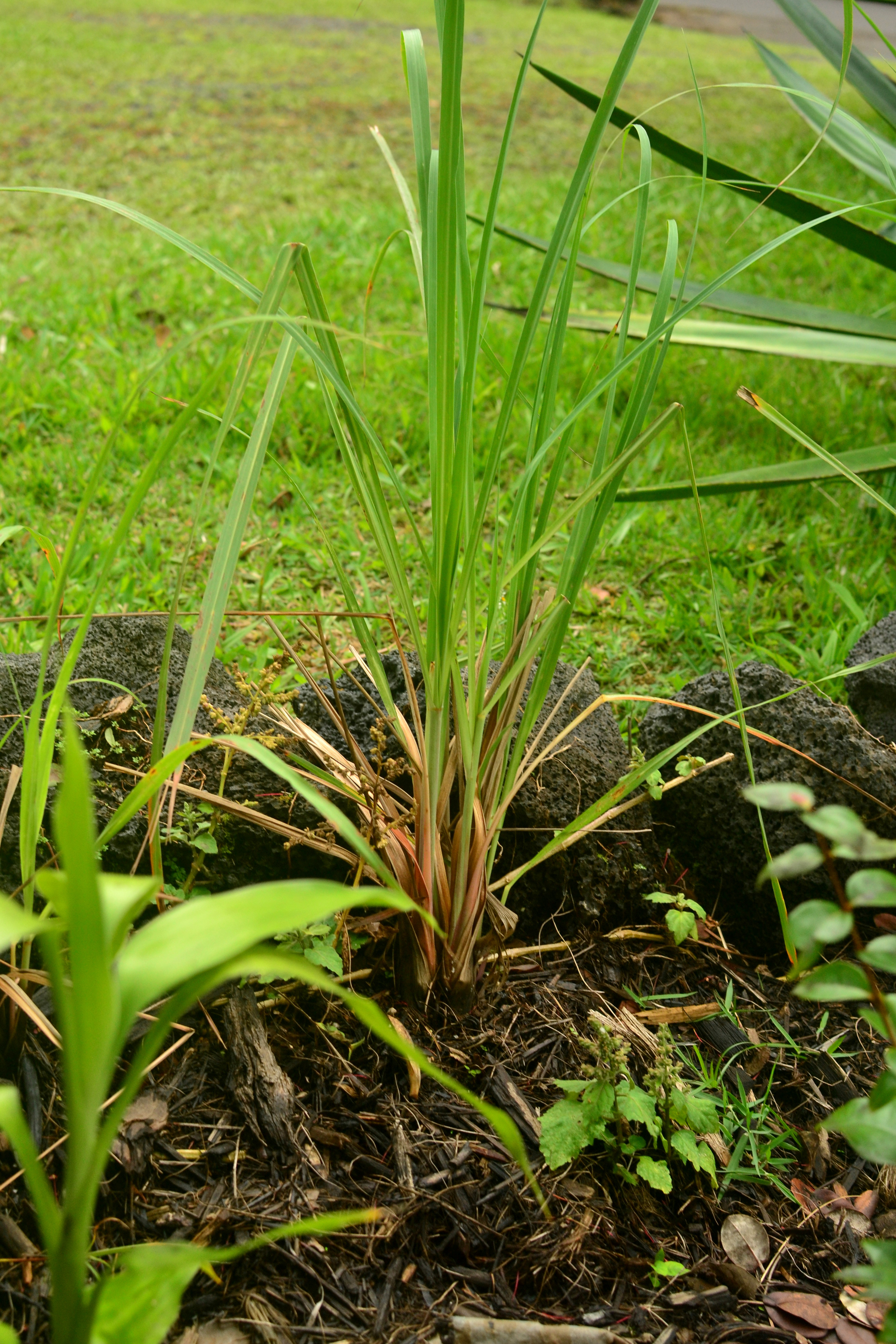
Propagation
Although lemongrass does grow from seed, it is better to get a non/low-seeding variety as it will be less likely to spread. The only way to know for sure if it is a non-seeding variety is to divide shoots, or grow cuttings, from a superior variety and grow a clone.
To take cuttings from an existent clump: pull off 2-3 shoots; trim the tops and stick into the ground 2-3 at a time. To create a hedge, plant them (2-3 shoots) 2 feet apart. They can also be rooted in water, but I’ve found they root just fine in the wet soil environment I live in.
Propagation by division: Find a mature clump (12 inch diameter) and pull the whole clump out of the ground. Divide the clump with a spade fork into 3-4 stocks each, and remove the top of the plant. Replant and water heavily.
They do take their time to establish with both methods. I regularly propagate by cuttings so I can continue harvesting for food while propagated plants establish.
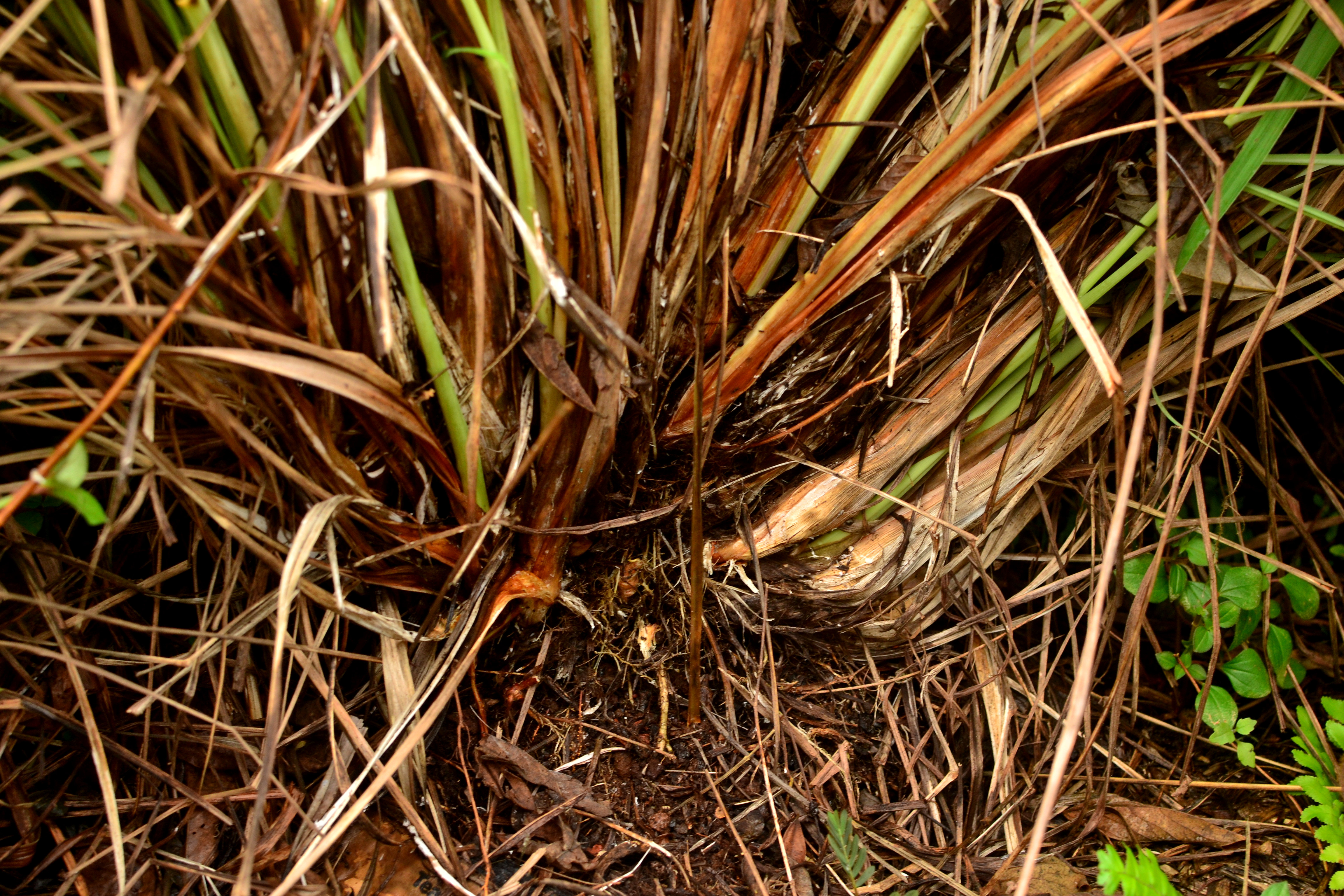
find center of clump
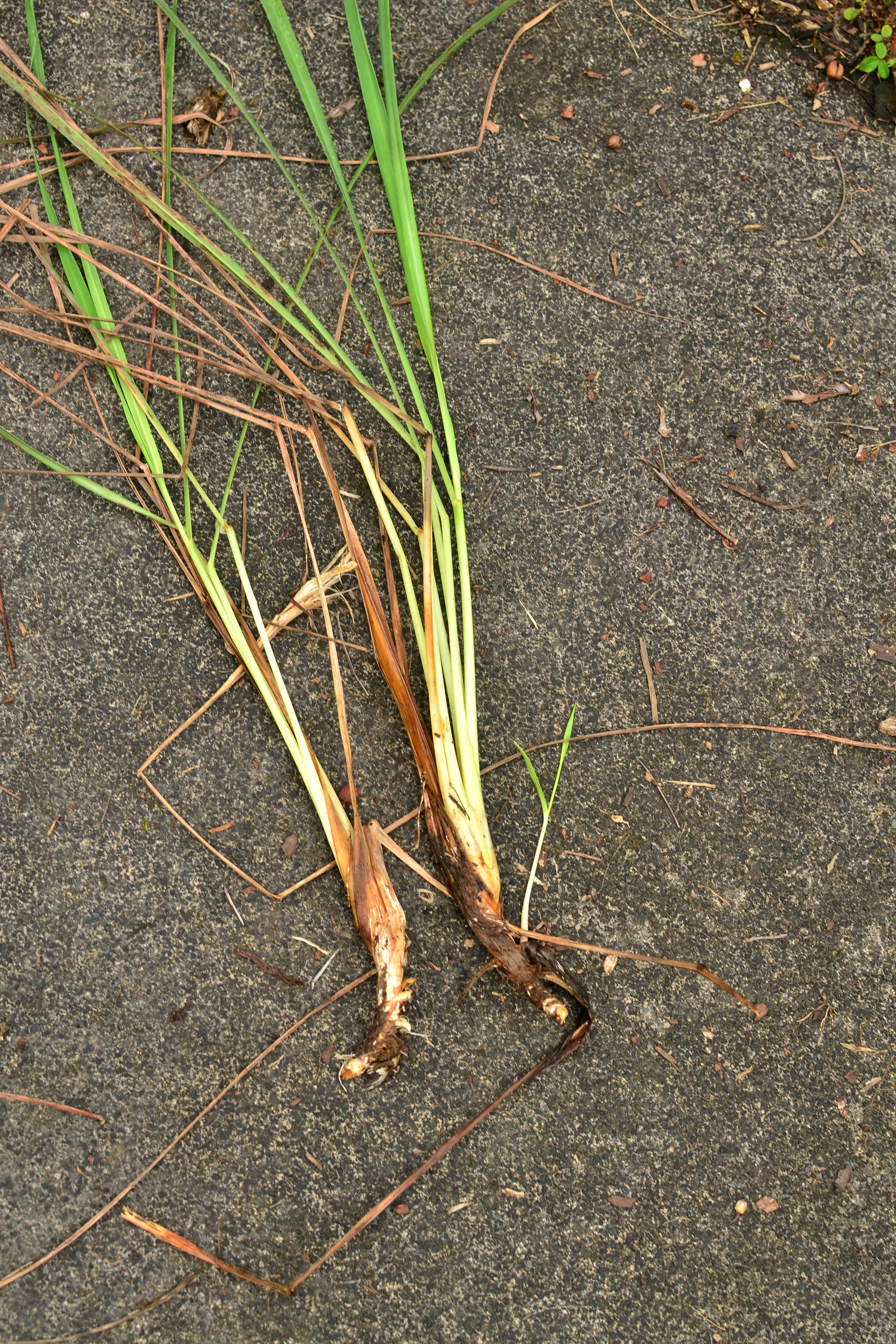
push stock down – to pull off a few stocks
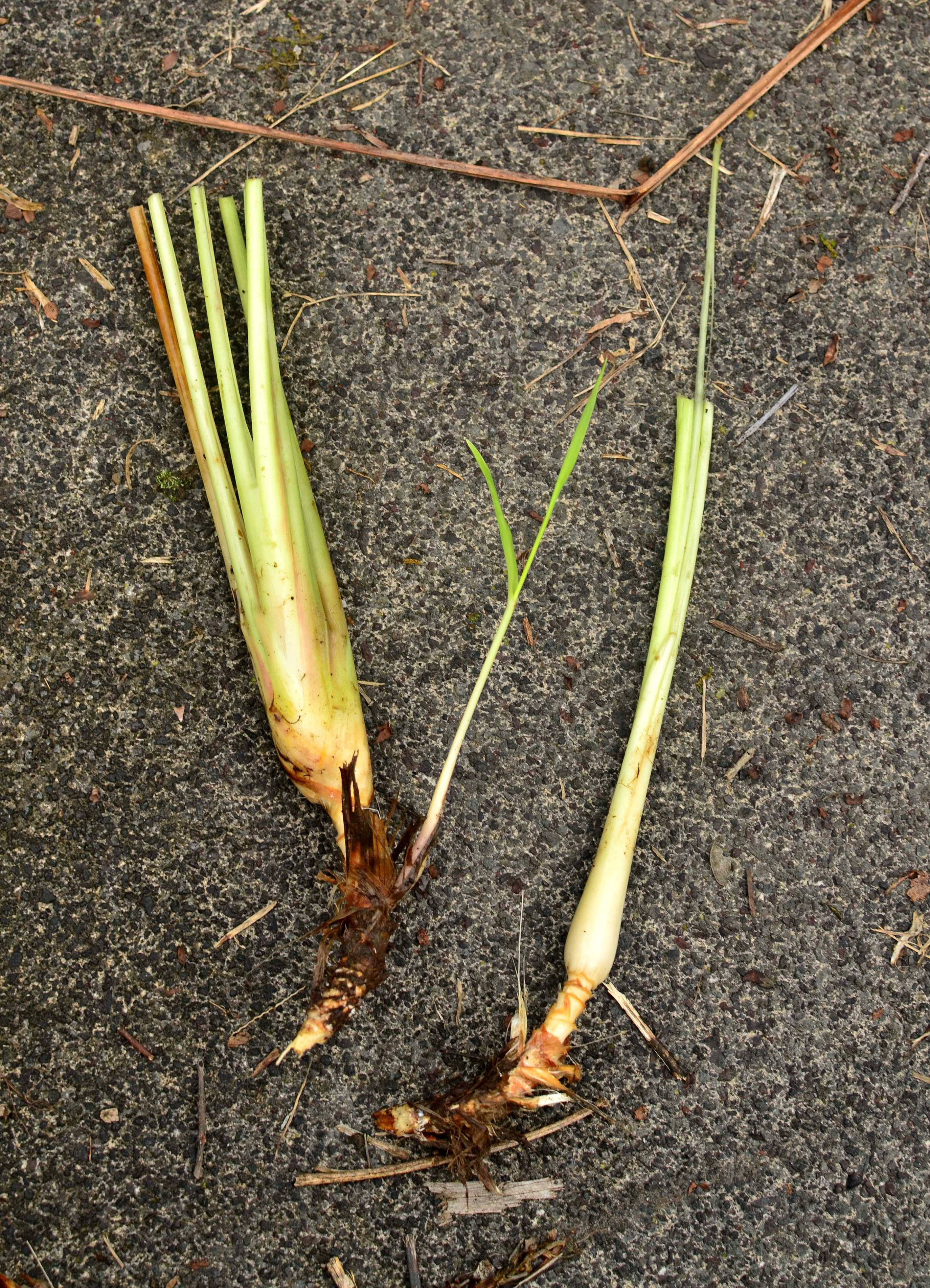
trim top leaves
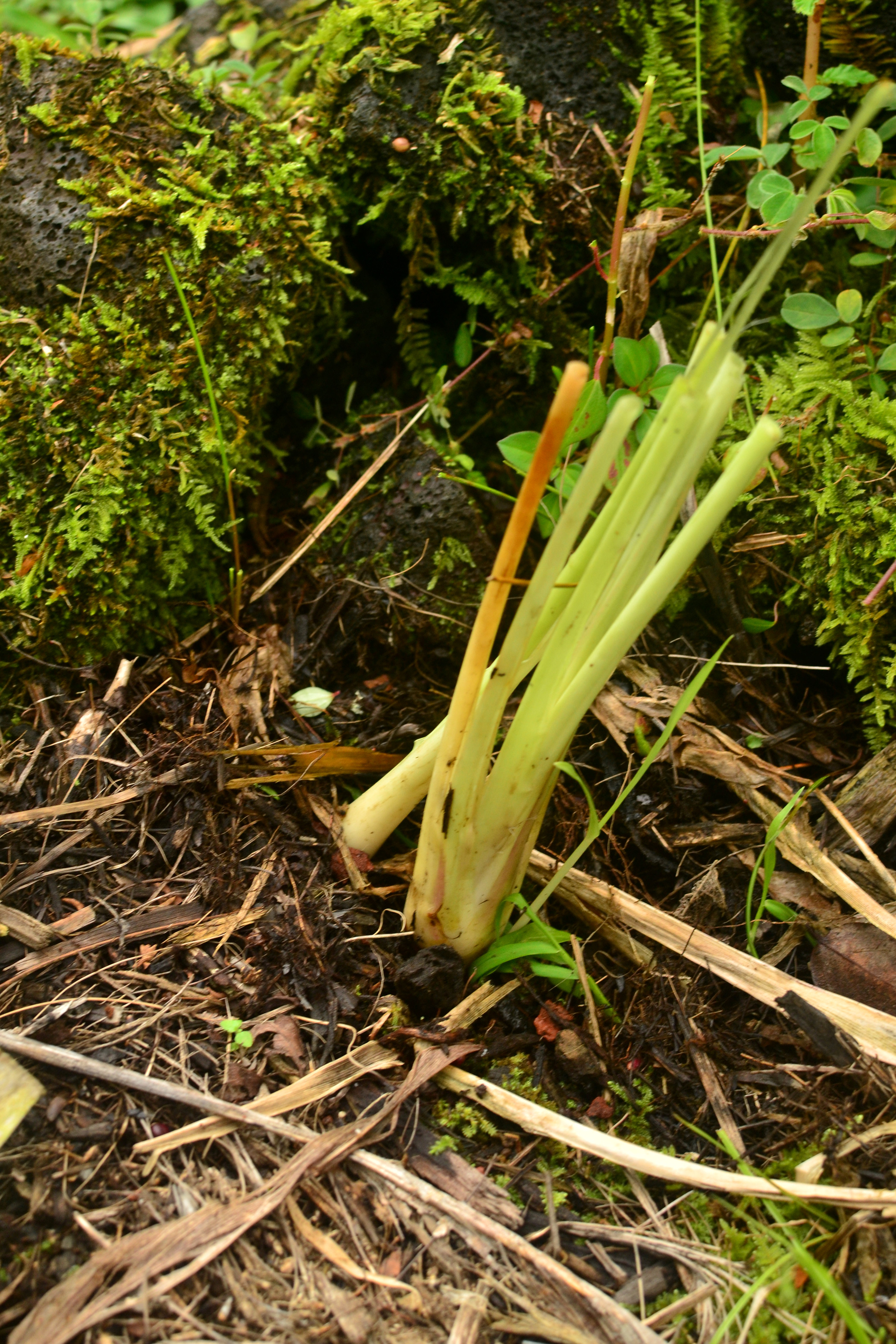
stick into ground
Care
Lemongrass is a carefree plant once established. Water new propagations heavily until new growth appears. Full sun is preferred, however, they can be grown in light shade but do not grow at their full sun vigor and become spindly. Mature plants are about 3 feet tall and wide and can tolerate fairly poor soils.
Eating
Prepare stocks by cutting off long ends of tops and trimming the base. Then ‘beat up’ the fleshy shoots before cooking. Add the shoots whole into your dishes and remove before eating.
Tender hearts of stocks can also be eaten as a vegetable in rice dishes.
Upper leaves may be used as flavoring as well, but should be tied in a bunch during cooking for easy removal before serving.
Where to obtain planting materials
Ask a friend for a couple of shoots and replant them. Or look at the farmers markets, as fresh shoots will still be fine for planting, or plant sales.
My Garden
I started off buying a single lemongrass plant. Once it became large enough I started propagating it. I had some space to fill in a newly created section of the yard; it was at the very front of the lot along the road. I had a few trees growing there taking up canopy space but needed something to fill in the ground and mid level so the house wasn’t visible by the road. So I decided to try out the lemongrass hedge. I stuck them in the ground every few feet and waited. Now that those plants are nice and mature it created an amazing barrier. The grass on the lawn doesn’t try to jump into the space and the desmodium inside of the space doesn’t try to jump out over the lemongrass. As the trees grow and fill in even more canopy space I’m surprised that the lemongrass is growing really well in the shade. I also layered this hedge with patchouli in case the shade becomes too heavy and the lemongrass doesn’t succeeded, the patchouli can grow in complete shade.
I’ve followed this same method in a section I just created that has more sun than the previous. However, this time I planted a row of Surinam cherries too. So I should have the lemongrass and patchouli fill in along the boundary quickly, and the Surinam cherries taking their time to fill in the rest of the hedge creating another barrier between my neighbors lot and mine.
The key is to garden in layers and succession, filling in newly cleared areas so all niches are filled, therefore, weeds will not take over.
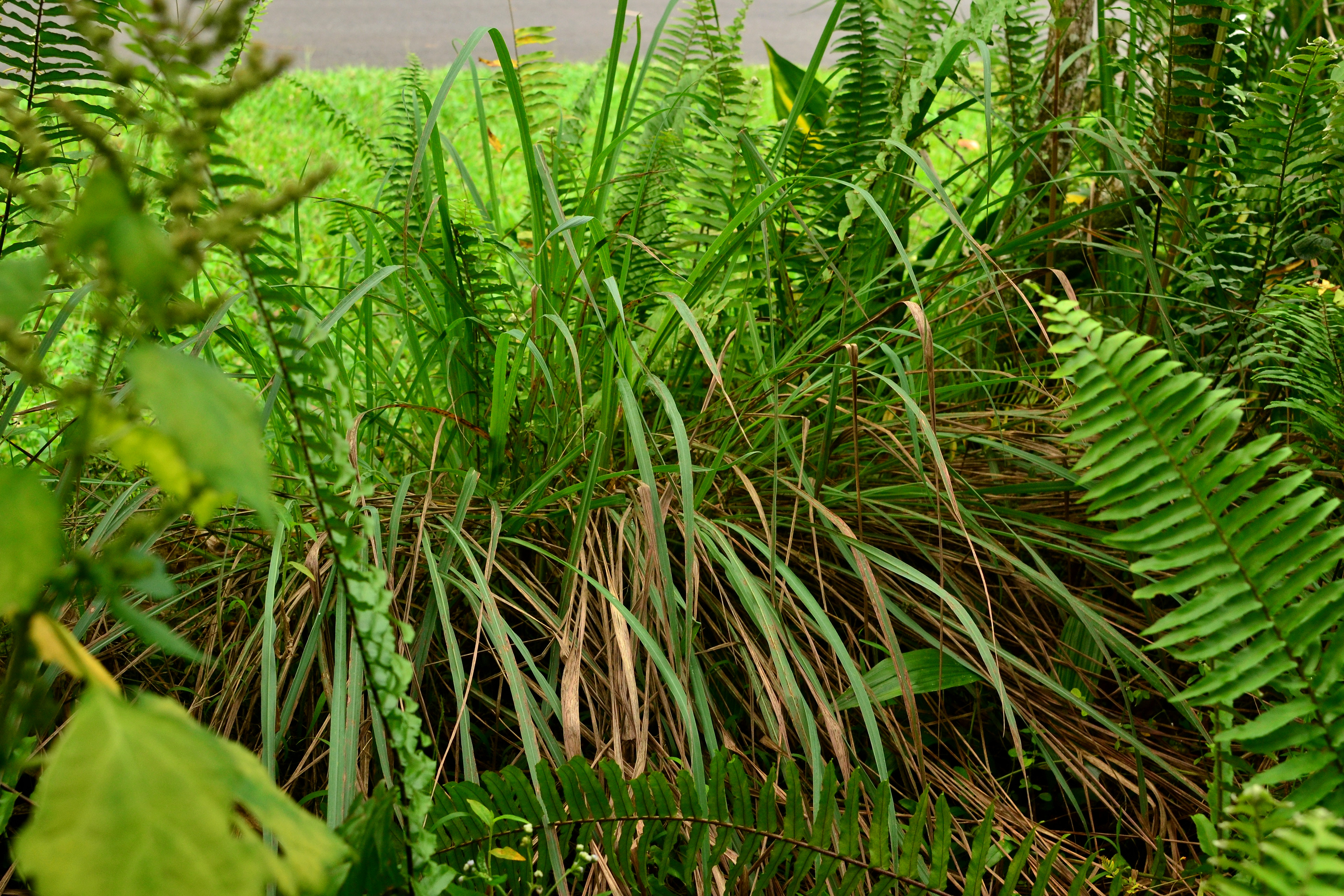
barrier hedge
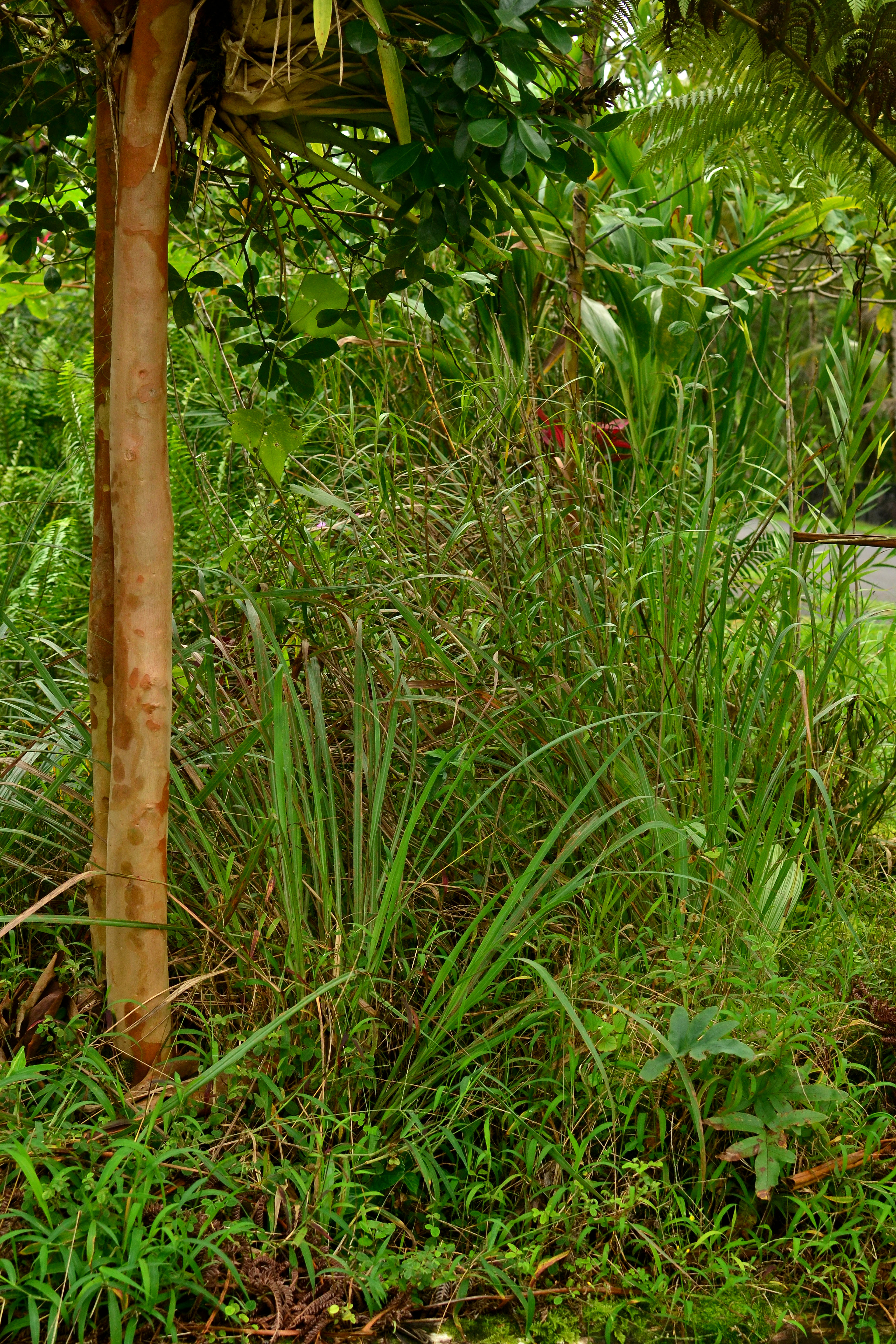
barrier hedge (lemongrass, strawberry guava, hapuu, avocado, kou, pigeon pea, papaya, soursop)
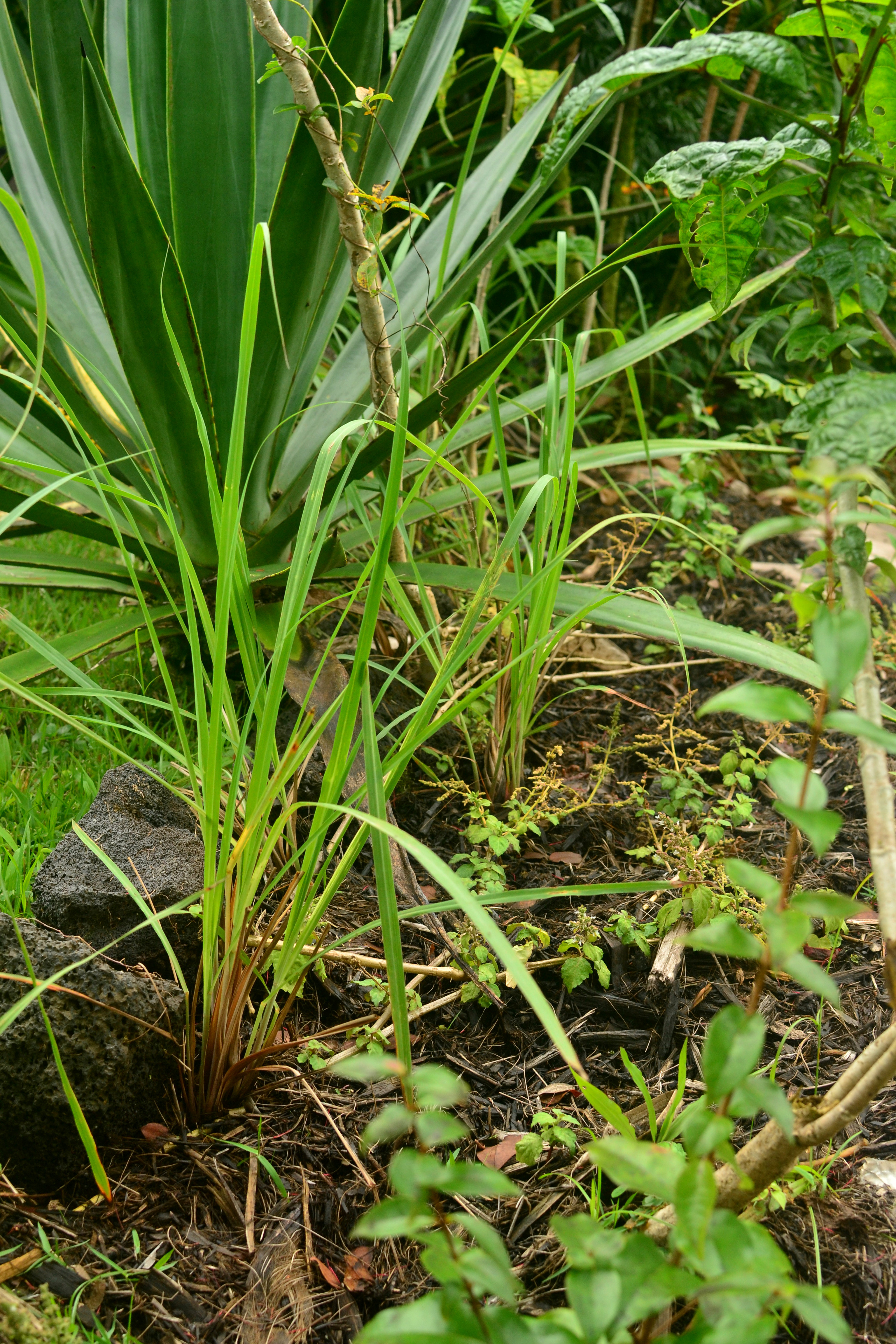
newly planted barrier hedge (lemongrass, patchouli, surinam cherry, naupaka, akala, aweoweo, kolomona, apple banana, edible hibiscus)
Happy Gardening!